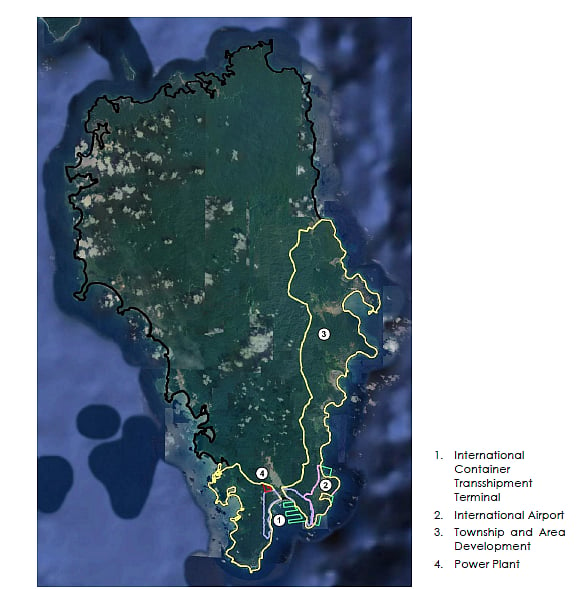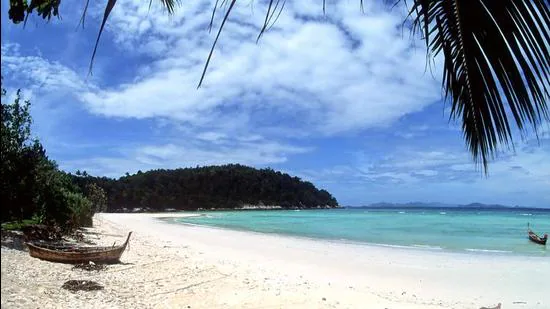The central government has granted clearance for the diversion of forest land for the development project of the Great Nicobar Island.
The project, at an estimated cost of Rs 72,000 crore, has already received the environmental clearance and the development activities are proposed to commence in the current financial year.
Swarajya explains the development plan for the strategically important Great Nicobar Island.
The Island
The Andaman and Nicobar Islands are a cluster of about 836 islands in the eastern Bay of Bengal.
The clusters comprise of two island groups, the Andaman Islands and the Nicobar Islands, separated by the 150-km wide Ten Degree Channel.

The Andaman Islands lies to the north of the channel and the Nicobar Islands to the south.
Great Nicobar Island (GNI), the southernmost last mass of the Andaman and Nicobar Islands is the largest of the cluster of islands with an area of about 910 sq km.
Indira Point, earlier known as Pygmalion Point, lies at the tip of the Great Nicobar Island and is the southernmost point of the country.
The island includes two national parks, a biosphere reserve, and is home to the Shompen and Nicobarese tribes.
The Inhabitants
Great Nicobar Island is inhabited by two Mongoloid tribes, Shompen and Nicobarese, having a population of 237 and 1094 respectively.
The Shompens are hunter-gatherers and depend on the forest and marine resources for sustenance.
The Nicobarese, who lived along the west coast of the island were relocated after the 2004 Tsunami.
The island also has 8000 ex-servicemen that were settled here by the government of India during the 1970s.
The Plan
The GNI Project is, in fact, four ‘interlinked’ projects that together constitute the new Greenfield city at Great Nicobar.
The four projects are the International Container Transshipment Terminal (ICTT), Greenfield International Airport, a power plant, and a township.

The project is being spearheaded by Andaman and Nicobar Islands Integrated Development Corporation (ANIIDCO), under a vision plan conceived by the NITI Aayog.
The idea behind the development of GNI is based on leveraging the locational advantage of being on the international sea route and develop GNI as a sustainable, green, global destination for business, trade, and leisure.
International Container Transshipment Terminal (ICTT)
The proposed port will handle 14.2 million Twenty-foot Equivalent Units (TEUs) of cargo capacity.
It will allow Great Nicobar to participate in the regional and global maritime economy by becoming a major player in cargo transshipment.
Development of transshipment terminal would attract existing traffic of ports along the eastern coast of India, Bangladesh and Myanmar, as they form the primary catchment for transshipment terminal.
Greenfield International Airport
The proposed Great Nicobar Island International Airport (GNIIA) will be developed as an international airport in Great Nicobar Islands.
The airstrip will be developed to cater for operation of Airbus A-380 type of aircraft, in all weather conditions having peak hour passengers’ capacity of 4,000.
The airport would be developed as a “joint military-civil, dual-use airport”, under the operational control of the Indian Navy and will cater to tourism as well.
Township
The Township project consists of a mixed-use development area that will link the infrastructure facilities to complete the physical framework of the new city.
It will be made up of commercial, industrial and residential zones, but a major chunk of the land will be set apart for different types of tourism projects and activities.
Power-Plant
The project proposes the development of a power plant near the ICTT, with capacity to produce sufficient electrical power to run the new city.
The power generation plan for the project envisages solar plants, gas based plants and some diesel generating stations in initial days.
Diesel gensets shall be used in initial phase of development and shall be about 15 per cent of the total demand of about 450 MVA.
About 10 per cent is planned through solar panels and the balance shall be gas based.
Timeline
The island, mostly covered by forests, has not witnessed large-scale human activity so far.
The project is to be implemented in phases over the next 30 years.
The pre-feasibility report indicated that the first phase would extend to 2036 (from 2021), and the second phase would stretch from 2037 to 2051, but the container terminal would become operational around 2027-28.


